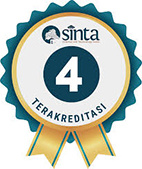Shaping Future Leaders: How Technology is Transforming Islamic Education in The Digital Age
Abstract
Keywords
Full Text:
PDFReferences
Abdolmohammadi, M. J., & Kamyabi, A. (2018). The impact of multimedia on teaching moral values to preschool children. Journal of Educational Technology, 13(2), 27-34.
Al-Farsi, M., & Al-Badi, A. (2016). Educational technology: Impact on educational effectiveness and social development. American Journal of Applied Sciences, 13(3), 234-237.
Al-Gahtani, S. S. (2016). Empirical investigation of e-learning acceptance and assimilation: A structural equation model. Applied Computing and Informatics, 12(1), 27-50. doi:10.1016/j.aci.2014.10.002
Al-Khaldi, M., & Alghamdi, M. (2015). The impact of using multimedia in teaching English language. Procedia - Social and Behavioral Sciences, 197, 1094-1103. doi:10.1016/j.sbspro.2015.07.328
Al-Makki, A. B., & Abdullah, H. (2020). Enhancing Islamic values education through mobile applications: A case study in Malaysia. Journal of Islamic Education and Research, 5(1), 58-71.
Al-Rawahy, S. M. A., & Al-Louzi, N. (2019). Integrating technology into Islamic education for early childhood: A systematic review. International Journal of Computer Applications in Technology, 62(1), 44-59.
Anderson, C. A., & Dill, K. E. (2000). Video games and aggressive thoughts, feelings, and behavior in the laboratory and in life. Journal of Personality and Social Psychology, 78(4), 772-790. doi:10.1037/0022-3514.78.4.772
Barak, M., Lipson, A., & Lerman, S. (2006). Wireless laptops as means for promoting active learning in large lecture halls. Journal of Research on Technology in Education, 38(3), 245-264.
D'Souza, K. (2017). The role of parents in children's online learning during the COVID-19 pandemic. Journal of Technology and Teacher Education, 28(2), 383-391.
El-Said, O. A. (2017). The effectiveness of educational software in teaching Islamic values to kindergarten children. Journal of Islamic Studies and Culture, 5(1), 12-26.
Khan, M. A. (2016). Technology integration in early Islamic education: Challenges and opportunities. International Journal of Education and Development using ICT (IJEDICT), 12(1), 98-112.
Mahfouz, M. M. (2018). Enhancing Islamic education for preschoolers through interactive multimedia: A case study in Saudi Arabia. Journal of Research on Technology in Education, 50(3), 217-231.
Riaz, M., & Shahzad, M. A. (2019). The impact of educational apps on early childhood Islamic education. British Journal of Educational Technology, 50(5), 2495-2507.
Rosenberg, M. J. (2001). E-learning: Strategies for delivering knowledge in the digital age. McGraw-Hill.
Saleh, I. M. (2017). Digital technology in Islamic preschool education: A review of literature. Journal of Educational Technology & Society, 20(1), 226-238.
Samad, A. A., & Rahman, M. A. (2020). Integrating technology into Islamic early childhood education: A case study in Bangladesh. International Journal of Educational Technology in Higher Education, 17(1), 1-15.
Spires, H. A., Wiebe, E. N., Young, C. A., & Hollebrands, K. (2010). Toward understanding the potential of augmented reality for mathematics education. Cyberpsychology & Behavior, 13(2), 1-6. doi:10.1089/cpb.2009.0164
Subrahmanyam, K., Kraut, R. E., Greenfield, P. M., & Gross, E. F. (2000). The impact of home computer use on children's activities and development. The Future of Children, 10(2), 123-144.
Turkle, S. (2017). Alone together: Why we expect more from technology and less from each other. Basic Books.
Umar, M. (2018). Developing character education for preschoolers through mobile apps: An Islamic perspective. Journal of Interactive Online Learning, 17(3), 258-271.
DOI: https://doi.org/10.24260/at-turats.v17i2.2785
Article Metrics
Abstract view : 1638 timesPDF - 780 times
Article Metrics
Abstract view : 1638 timesPDF - 780 times
Refbacks
- There are currently no refbacks.
Copyright (c) 2023 Muthmainnah Mursidin

This work is licensed under a Creative Commons Attribution 4.0 International License.

This work is licensed under a Creative Commons Attribution 4.0 International License.






